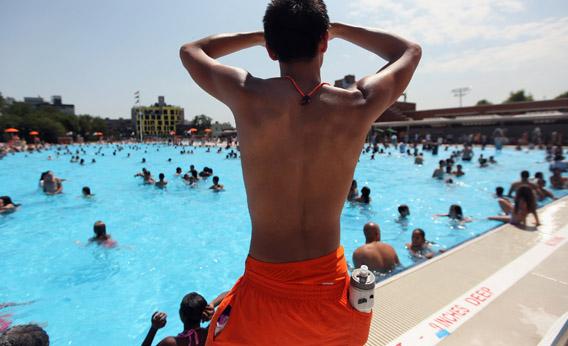Could You Recognize If Someone Is Drowning?
Many of us will be spending this triple-digit weekend in Davis by the pool of our Tandem apartment or down by Putah Creek or one of the rivers. There will be much splashing and merriment, and possibly one or two beers or mai-tais will be consumed. Unfortunately, some people will drink too much, or bang their heads, or otherwise get into trouble and need to be rescued. Do you know what a drowning victim looks like? Many of them don’t even look like they need help, and it can be hard for non-professionals to see the danger signs. Slate has some great advice:
 The Instinctive Drowning Response—so named by Francesco A. Pia, Ph.D., is what people do to avoid actual or perceived suffocation in the water. And it does not look like most people expect. There is very little splashing, no waving, and no yelling or calls for help of any kind. This doesn’t mean that a person that is yelling for help and thrashing isn’t in real trouble—they are experiencing aquatic distress. Not always present before the Instinctive Drowning Response, aquatic distress doesn’t last long—but unlike true drowning, these victims can still assist in their own rescue. They can grab lifelines, throw rings, etc.
The Instinctive Drowning Response—so named by Francesco A. Pia, Ph.D., is what people do to avoid actual or perceived suffocation in the water. And it does not look like most people expect. There is very little splashing, no waving, and no yelling or calls for help of any kind. This doesn’t mean that a person that is yelling for help and thrashing isn’t in real trouble—they are experiencing aquatic distress. Not always present before the Instinctive Drowning Response, aquatic distress doesn’t last long—but unlike true drowning, these victims can still assist in their own rescue. They can grab lifelines, throw rings, etc.
Look for these other signs of drowning when persons are in the water:
– Head low in the water, mouth at water level
– Head tilted back with mouth open
– Eyes glassy and empty, unable to focus
– Eyes closed
– Hair over forehead or eyes
– Not using legs—vertical
– Hyperventilating or gasping
– Trying to swim in a particular direction but not making headway
– Trying to roll over on the back
– Appear to be climbing an invisible ladder
– Head tilted back with mouth open
– Eyes glassy and empty, unable to focus
– Eyes closed
– Hair over forehead or eyes
– Not using legs—vertical
– Hyperventilating or gasping
– Trying to swim in a particular direction but not making headway
– Trying to roll over on the back
– Appear to be climbing an invisible ladder
